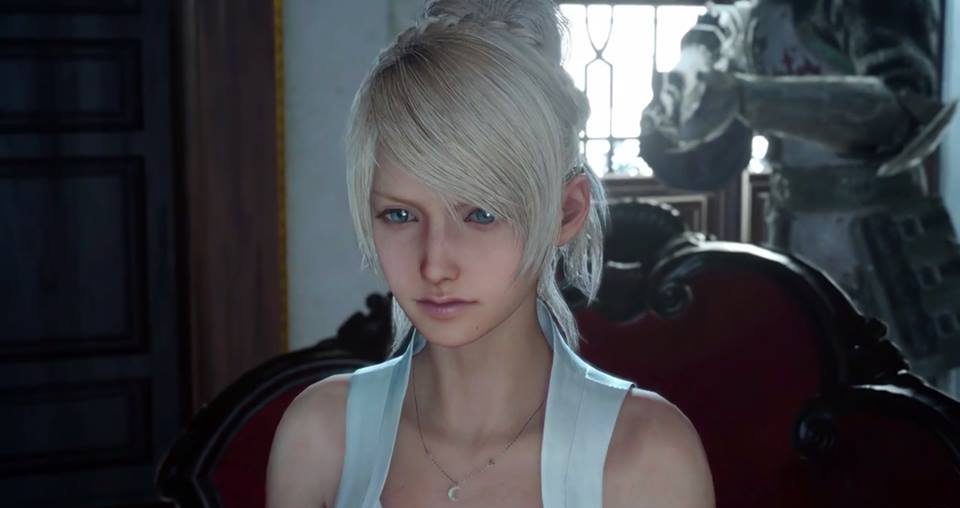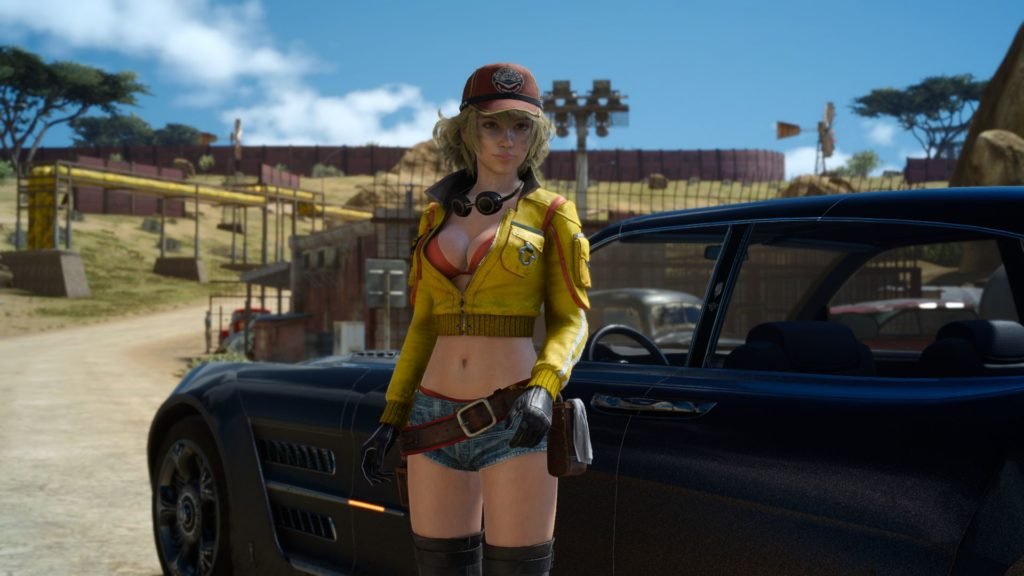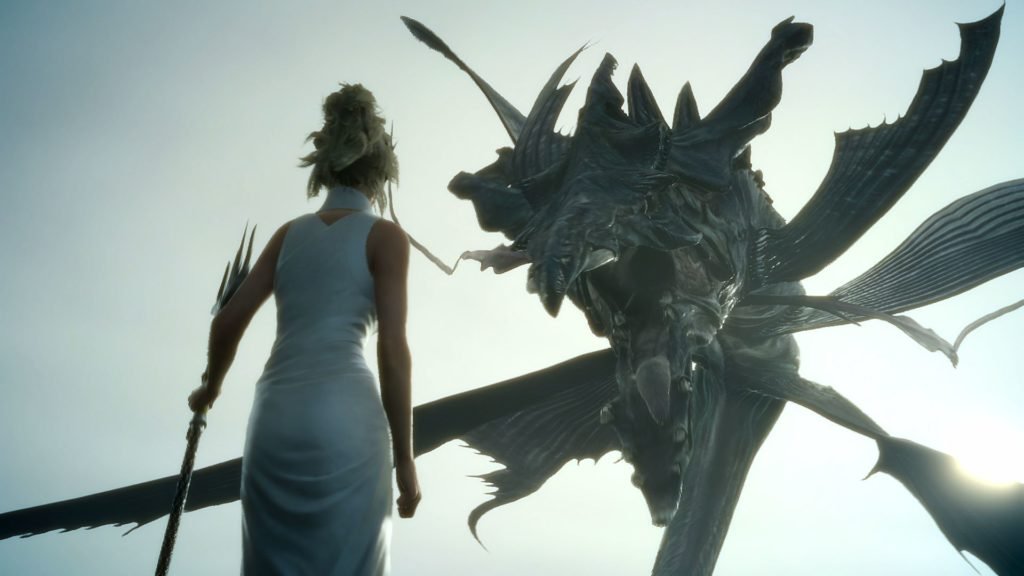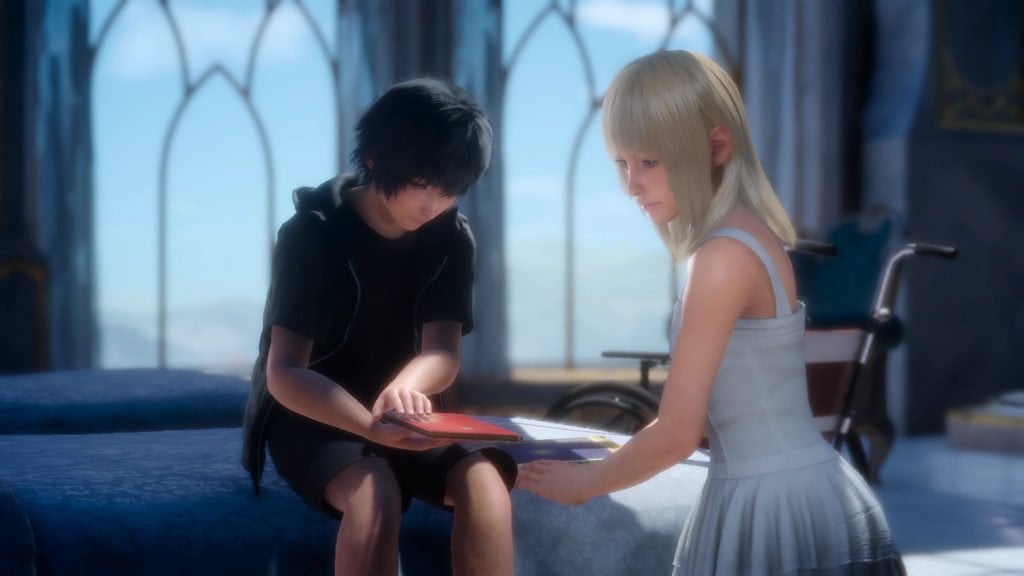After years of waiting, fans have finally gotten their hands on Final Fantasy XV. And while not everyone might be enjoying it as much as they hoped, the general response has been fairly positive. The central four characters shine, and the game succeeds because of it. But even with that strong main cast of Noctis, Gladio, Ignis, and Prompto, there is no denying that the overarching narrative, and the characters involved in it, struggle.
Many of Final Fantasy XV’s side characters just don’t receive enough attention for players to grow attached to them. Though each of the quest givers, like Cid and Dino, seem to have an intense personality out of the gate, they come off as more exaggerated than necessary. We never have enough context for them to flesh out as full characters.

One of the most troublesome side characters is Noctis’s bride-to-be, Lunafreya. Even though she features as one of the leads in the Kingsglaive film and clearly has more to her character, almost none of that comes through in the game. The argument can be made that Luna receives less of a focus because the game is meant to center on Noctis and his bodyguards. But by shortchanging Luna, Square Enix missed a valuable opportunity, and ended up shortchanging Noctis and the rest of the game at the same time.
Spoilers follow for up to the end of Chapter 9 – “Callings” (Altissia) of Final Fantasy XV
Ever since Square Enix rebranded Final Fantasy XV and revealed it to the world in its new, road trip centered form, there have been concerns about sexism. Even though the franchise traditionally has featured both male and female main characters, Final Fantasy XV focuses solely on a group of men. Add in that the only female character we saw early on was booty short-sporting Cindy, and the concerns had a real basis.

Now that the game is out, it’s possible to have a more frank conversation about the role the secondary characters play, both men and women. Cindy is just as intolerable and ridiculous now as she was in the Episode Duscae demo, but we also have characters like the no-nonsense mercenary Aranea Highwind, and the stern Altissian stateswoman Camelia Claustria. With that in mind, it would be unfair to discount Final Fantasy XV as simply being sexist. The game is meant to focus on a small group of male friends, and all the secondary characters, regardless of gender, come across as underdeveloped.
That said, Lunafreya isn’t just any other secondary character. And her treatment throughout the game leaves quite a bit to be desired. First off is the rather hard to ignore trope of her death. In 1999, comics writer Gail Simone coined the phrase ‘women in refrigerators’ when talking about female characters included in a narrative, and killed off, as a device for moving a male protagonist’s story forward. The term is in reference to a Green Lantern comic in which the hero returns home to find a villain has killed his girlfriend and stuffed her in the refrigerator. No matter how you look at it, Luna’s death does fall into the same trappings.
The role female characters play in games at large is worth talking about. But specifically here, Luna’s death and limited role in Final Fantasy XV is of direct harm to the game. There are two main elements to the title’s narrative, the gods and daemons storyline, and the personal, character-driven storyline of Noctis’s relationships with Gladio, Ignis, and Prompto. Luna was positioned perfectly to better both.

The weaker half of the story, Final Fantasy XV has a hard time explaining the ins and outs of the astrals, the lucii, the daemons, the crystal, and everything else attached the more magical side of Eos. With so much of it left vague, the story admittedly fizzles out in the end and sputters along instead of building into gigantic fireworks-finale. As the Oracle, the person in the fiction meant to be the ambassador between the gods and humans, Luna was ideally placed to better introduce those elements into the game. Had we seen more of her mission to contact each of the gods ahead of Noctis, let alone if she had played a more central role in the plot as a whole, it would have gone a long way to establishing what was actually going on.
On the other side, exploring Luna’s character would have been a unique way for players to learn more about Noctis. As it is, Noctis is positioned as somewhat of a loner, someone who mainly keeps to himself due to his station. All we see of Noctis is how he interacts with people who are, whether friends of not, still subordinates. The only time he interacts with anyone that could be called his equal, its Camelia Claustria during the summit in Altissia. But in that case, it is left up to player choice for how to handle the situation. In short, while Gladio, Ignis, and Prompto radiate with personality, Noctis himself remains restrained, far from a standout character.

Seeing Noctis and Luna together, not just as children and not just in a dream, could have served as excellent characterization for them both. We are defined by the relationships we keep. And though there is plenty of implication that the betrothed pair do share a relationship, even if it is just messages they have written back and forth over the years, it is impossible for players to fully grasp either character without actually seeing it. Even after fifty hours in Noctis’s shoes, I still feel I know almost nothing about him as a person, or the woman he seemed to legitimately love.
It did not take long for Luna to be called a ‘rip-off Yuna,’ or a ‘wannabe Aeris.’ And sadly, both comparisons make a lot of sense, her connection to the gods and her ability to heal being two of the only things the game shows us about her. By leaving Luna on the sidelines, and killing her for what seems to be the main purpose of making Noctis sad, Square Enix made a mistake. Not only did the developer fall into a common cliché, but the narrative lost a valuable character that could have made Final Fantasy XV all that much better.

